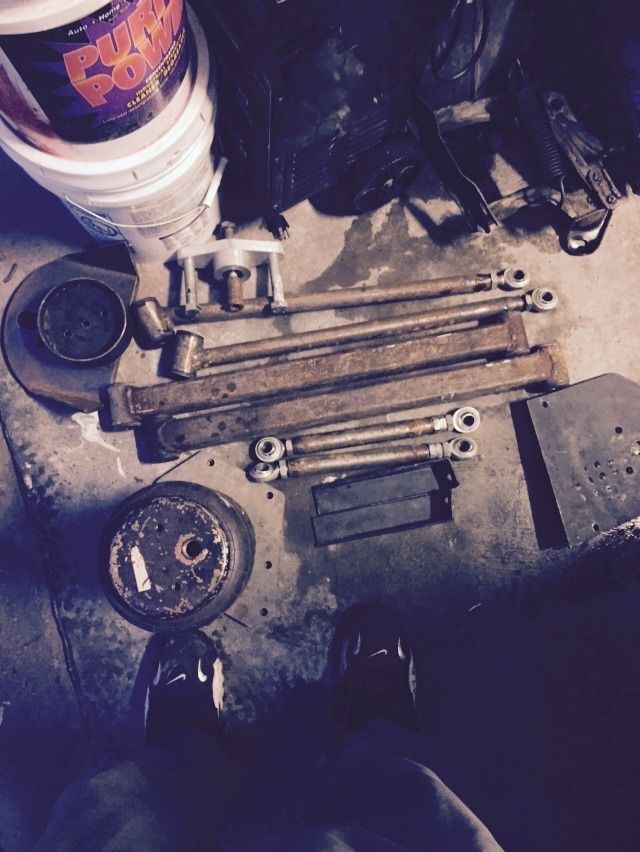J
Angle on tri 4-link
G
ghostwhite
+1y
You should be able to use a triangulated 4 link and a watts link but I don't know if you would need to. If your triangulated 4 link has good angles and heavy duty bars you should be fine with just that.
It all depends on how strong you build your links either way, a small watts link won't be the right answer either.
It all depends on how strong you build your links either way, a small watts link won't be the right answer either.
S
slimneverdies
+1y
In my mind I was seeing it binding because there where to many pivot points trying to control the axle. That's just in my mind tho, trying to picture it articulating with this many pivots....
G
ghostwhite
+1y
The only time you would have to worry about too many pivot points in this scenario is if those points cause a conflict in the direction of travel of the axle.
The Triangulated 4 link allows the suspension to move up and down. A byproduct of that movement is front to back as the arms follow the curved produced by the front 'permanent' pivot point of the links. This forward and back movement is pretty minor if your links are of a suitable length. The triangulation of the links doesn't allow side to side movement(if they are angled properly) of the axle.
The watts link's function is only to control the side to side movement of the axle. It allows movement up and down and to a small degree it allows front to back movement depending on the choice of link ends of your watts link pivot arms. If you are using Rod End Bearing joint(often referred to as heim joint) then you will have more allowable movement front to back than if you had bushing ends.
These two paths of travel do not interfere under normal circumstances in the limited travel that these trucks have.
The Triangulated 4 link allows the suspension to move up and down. A byproduct of that movement is front to back as the arms follow the curved produced by the front 'permanent' pivot point of the links. This forward and back movement is pretty minor if your links are of a suitable length. The triangulation of the links doesn't allow side to side movement(if they are angled properly) of the axle.
The watts link's function is only to control the side to side movement of the axle. It allows movement up and down and to a small degree it allows front to back movement depending on the choice of link ends of your watts link pivot arms. If you are using Rod End Bearing joint(often referred to as heim joint) then you will have more allowable movement front to back than if you had bushing ends.
These two paths of travel do not interfere under normal circumstances in the limited travel that these trucks have.
S
slimneverdies
+1y
Thanks Ghostwhite. I do have the heim joints on the watts link I made and the upper bars of my triangulated link. I didn't make a parallel link cause I love my dual gas tanks and didn't want to move them...


Related Discussions in Dually Suspension
Thread
Posts
Last Post
Michigan Metal Works A-Arm group buy 88-98 Chevy/GMC 1500 to 3500 and dually's
S
last post by
Strokersace +1y
8
8
S
last post by
Strokersace +1y

